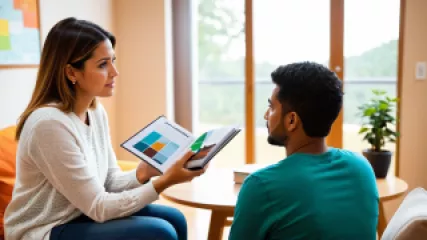Understanding Attachment Styles in Counseling: A Research Summary
Welcome to this research summary on understanding attachment styles in counseling. Attachment theory, developed by psychologist John Bowlby, explores how early relationships with caregivers shape our patterns of relating to others throughout our lives. In counseling and therapy, understanding attachment styles can provide valuable insights into clients' behavior, emotions, and interpersonal dynamics.
Introduction to Attachment Theory
Attachment theory suggests that our early experiences with primary caregivers influence the formation of internal working models that guide our future relationships. These internal working models consist of beliefs, expectations, and strategies for relating to others. The quality of these early attachments can shape our attachment styles, which are categorized into four main types: secure, anxious-preoccupied, dismissive-avoidant, and fearful-avoidant. Let's explore each attachment style in more detail.
Secure Attachment Style
Individuals with a secure attachment style generally have positive beliefs about themselves and others. They feel comfortable with intimacy and seek out close relationships. Securely attached individuals tend to have trusting, supportive, and reliable interactions with their partners. They can effectively communicate their needs and respond sensitively to their partner's emotional cues.
People with a secure attachment style are more likely to have successful and satisfying relationships. They experience less relationship distress, exhibit greater emotional regulation, and have higher levels of relationship satisfaction compared to other attachment styles.
Anxious-Preoccupied Attachment Style
Anxious-preoccupied individuals often have negative views of themselves but positive views of others. They desire close relationships and worry about rejection or abandonment. They tend to rely heavily on their partners for reassurance and validation.
People with an anxious-preoccupied attachment style may exhibit clingy or demanding behavior in relationships. They may be overly sensitive to any signs of potential rejection and may struggle with jealousy or possessiveness. Their fear of abandonment can lead to emotional volatility and difficulties with trust.
Dismissive-Avoidant Attachment Style
Individuals with a dismissive-avoidant attachment style have positive views of themselves but negative views of others. They value independence and self-reliance, often avoiding intimacy and emotional vulnerability. They may prioritize personal goals and achievements over relationships.
People with a dismissive-avoidant attachment style tend to downplay the importance of close relationships and may suppress or dismiss their own emotions. They may struggle with expressing their needs and may appear emotionally distant or detached in relationships.
Fearful-Avoidant Attachment Style
Fearful-avoidant individuals have negative views of both themselves and others. They desire close relationships but are simultaneously afraid of rejection and abandonment. They may be caught between a desire for emotional closeness and a fear of being hurt.
People with a fearful-avoidant attachment style may display contradictory behaviors in relationships, alternating between seeking closeness and pushing their partner away. They may struggle with trust, intimacy, and managing conflicting emotions.
Attachment Styles in Counseling
Understanding attachment styles can be invaluable in counseling and therapy settings. By identifying clients' attachment styles, therapists can tailor interventions to address specific attachment-related issues and promote healthier relationship patterns.
In counseling, therapists may use various approaches to help clients explore and understand their attachment styles. These approaches can include psychodynamic therapy, cognitive-behavioral therapy, and emotion-focused therapy. The goal is to create a safe and supportive therapeutic environment where clients can gain insight into their attachment patterns and develop more secure ways of relating to others.
Therapists may also utilize attachment-based interventions such as attachment-focused family therapy, which aims to enhance family relationships by addressing attachment-related challenges within the family system.
Attachment Styles and Self-Help
While counseling and therapy provide professional guidance for addressing attachment-related issues, individuals can also benefit from self-help resources. Understanding your attachment style can empower you to make conscious choices in your relationships and personal growth.
Self-help books, online resources, and workshops on attachment theory can provide valuable insights and practical strategies for developing more secure attachment styles. These resources may offer exercises, reflection prompts, and guidance for improving communication, managing emotions, and building healthier relationships.
It's important to note that self-help resources should complement, not replace, professional support. If you are struggling with attachment-related challenges or find it difficult to make progress on your own, seeking counseling or therapy is highly recommended.
Conclusion
Understanding attachment styles in counseling is a crucial aspect of promoting healthy relationships and personal growth. Attachment theory offers valuable insights into the ways our early experiences shape our patterns of relating to others. By exploring attachment styles in therapy and utilizing attachment-based interventions, individuals can develop more secure attachment patterns and improve their overall well-being.
Whether through counseling, therapy, or self-help resources, the journey of understanding and transforming attachment styles can lead to more fulfilling and satisfying relationships.
Sources:
- Bowlby, J. (1969). Attachment and loss: Vol. 1. Attachment. New York: Basic Books.
- Cassidy, J., & Shaver, P. R. (Eds.). (2016). Handbook of attachment: Theory, research, and clinical applications. Guilford Press.






